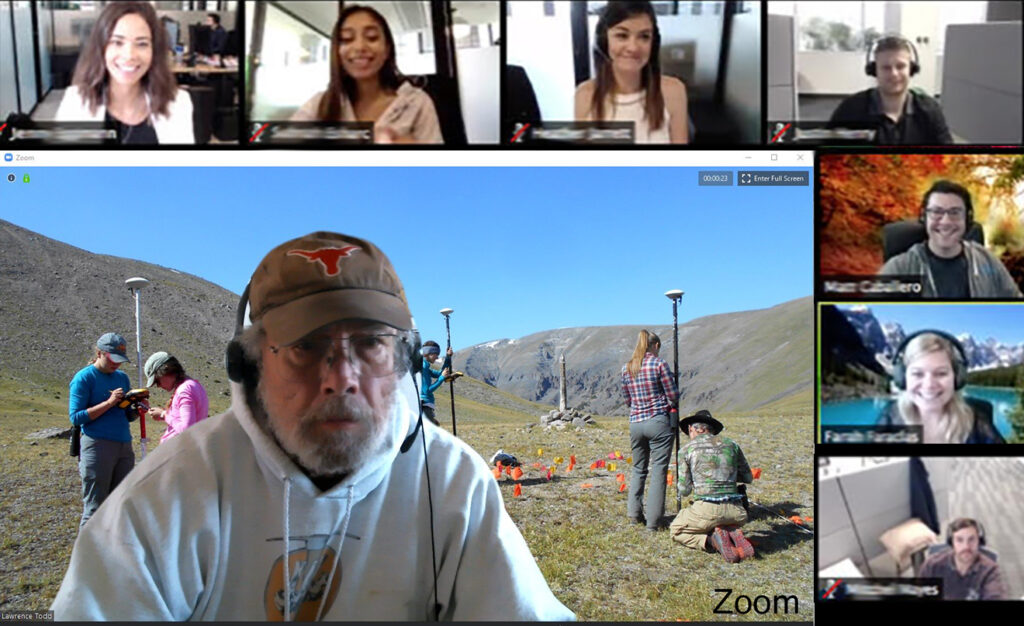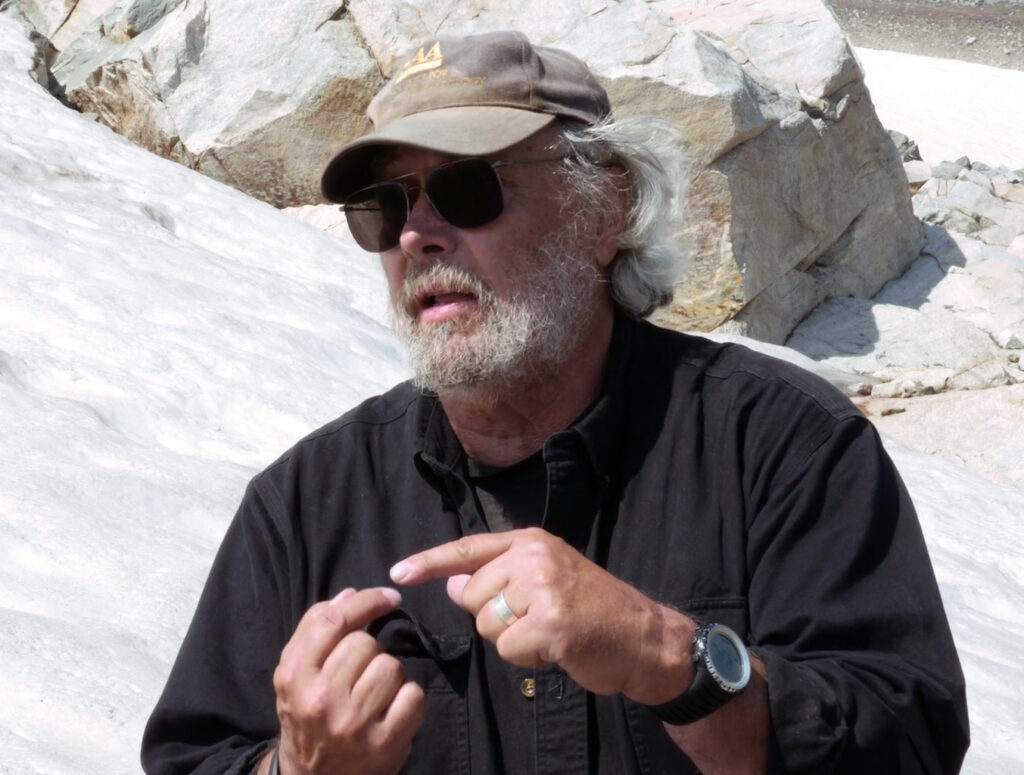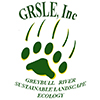While it is always best, and most fun to share archaeological activities in an outdoor, person-to-person setting the COVID-19 Pandemic of 2020 has limited some of these options. Therefore, this series of six Zoom classes is designed to do instead of a several day, live event. It has it’s downsides, but also gives me an opportunity to present a more diverse set of information types than is possible in person.
General overviews of each section are given below. For more detailed information and for background material, exercises, and related materials you can visit each lesson’s webpage. The links for Zoom meetings are also included for each class period.
The descriptions below give both a general description of each day’s topics and a link to more information (and Zoom Meeting information) for each of the six sessions. The webpage for each session contains an overview of the basic topic, links to additional information, and suggested activities. Whenever possible the information presented as examples is from archaeology of northwest Wyoming or near-by areas. This will not be a class on Egyptian pyramids or Mayan cities — our hope is that you will develop a better understanding of our local, Wyoming archaeology and recognize how you can learn more about it and help protect it. We recommend that you spend some time on these paged before the Zoom session so that you can come to the session with thoughts and questions.
The information and activities for each session have been created to make the Zoom events a place for questions, answers, and exploration of aspects of the topic that interest you rather than a lecture. Come prepared, participate, and question.

Preparing for the zoom lessons
Each of the six lessons has additional information (as well as link to the Zoom meeting) and background. This series provides brief introductions to facets of Wyoming archaeology is based largely on on-going or recent work in the State. It is not comprehensive and skims over many important issues, research topics, and methods. The goal is not to have a all encompassing Introduction to Wyoming Archaeology, but rather to give you a chance to see, and think about, a few aspects of the field before each on-line session and then interact with an archaeologist to answer questions and explore ideas. These sessions are presented from my perspective on Wyoming archaeology and very definitely reflect my opinions and experiences.
To make the most of the on-line sessions, I recommend that you:
- Spend at least a half hour with each class session webpage before the on-line session. Watch the videos, download any material of interest, explore the links to additional material.
- Take notes on things that you find interesting, confusing, or just want to know more about.
- Think of at least two things you’d like to talk about or learn more about based on the class topics and prepare a couple questions or discussion topics for the on-line session.
- As the session in underway, feel free to raise your hand and ask questions
Introductions
I would like to get to know about your background and interests in archaeology, so if by way of introduction, you’d each take a couple minutes and answer are few questions it would help me know a little bit about you. Please fill out this form:
https://forms.gle/4BiCFqzLsTwi3uTe9
Instructor: Lawrence Todd
Who am I?
The materials covered and approaches for introducing them are influenced my training, field experiences, and research interests. They clearly do not cover all the potential bases of topics that could be addressed, but are a reflection of my background. Here’s a quick look at who I am:

Larry Todd (BA, University of Wyoming, MA, PhD, University of New Mexico) is Professor Emeritus in Anthropology at Colorado State University and a Research Fellow in Anthropology at the University of Texas, Austin. A native of Meeteetse, Wyoming, where he now lives, Todd has conducted archaeological fieldwork on the Great Plains for nearly 50 years with much of his research focusing on taphonomy of bison kill sites. Since 2002, Todd splits his time between researching early human paleoecology in NW Ethiopia and prehistoric montane/alpine landuse in N.W Wyoming.
Class 1.1. WHAT IS ARCHAEOLOGY?
What do archaeologists study? How are archaeologists trained? What do you have to study to do archaeology? Do archaeologist dig up dinosaurs? What do archaeologists hope to learn? Where is archaeology done? Why is archaeology done? This session will include a brief background on the history of archaeology and an overview of archaeology today stressing the importance of heritage management and protection of the archaeological record. The session will focus on student questions with interactive answers, and discussion.
CLASS 1.2. wYOMING’s past
You will be introduced to a timeline of Wyoming’s past. What does archaeology tell us about how long people have lived in Wyoming? What are some of the key archaeologial sites in the Big Horn Basin? Are there sites that we can visit? This session includes interactive demonstration and question/answers.
CLASS 2.1. sTONE tOOLS
Our long-term history is written in stone. Stone tools are one of the first important human technological innovations. What are they? How are they made? What types of stone are commonly used? Aren’t they a poor substitute for a real tool? What’s the difference between a chipped stone tool and a rock? What is a ground stone tool? This session includes interactive demonstration and question/answers.
CLASS 2.2. tELLING TIME
Many of the things archaeologists study happened a long time ago. How do we tell when something happended? Archaeologists use a varity of techniques to establish how old a site or artifact is. These include stratigraphy, radiocarbon dating, and artifact types. This session disucusses these methods, answers questions, shows examples of distinctive artifacts, talks about how to recognize relative ages of stone points, and show how some of these artifacts were used. This session includes interactive demonstration and question/answers.
Class 3.1. bONES
In addition to stone tools, one of the more common sources of information about the past comes from the study of bones. This session gives an overview of the major bones in one of the more common animals found in archaeological sites in Wyoming – bison – and compares the bison bones to bones in a plastic replica of a human skeleton to illustrate similarities and differences between the bones of these two mammal species.
Class 3.2. DOING ARCHAEOLOGY
Now that you have a foundation in what archaeology is, we turn to a quick look at what archaeologists do. How do archaeologist choose a site to excavate? What happens on an archaeological excavation? What is an archaeological survey? Why does it matter where things are found? What happens to things that an archaeologist collects? This session includes slides of several archaeological sites and of archaeologists working in the field and laboratory. Plenty of time for question/answers.
Where now? Learning more about Archaeolgy
Going beyond this quick introduction, there are several ways you can learn more about Wyoming archaeology. Here are several places and webpages you can visit to learn more:
- Visit a local museum, the Washakie County Museum in Worland has a very good series of archaeology displays. Also has very nice paleontology section so you can learn about similarities and differences between archaeology and paleontology.
- Visit the Medicine Lodge Creek Archaeological Site near Hyattville.
- Visit the Legend Rock Petroglyph Site near Thermopolis.
- Look at the Society for American Archaeology education page.
- Watch the Office of the Wyoming State Archaeologist Facebook page for information on on-line Archaeology Fair events in September, 2020.
- Learn more about the laws that help protect our archaeological heritage.
- If you find an archaeological site, don’t damage it by collecting or moving artifacts. Take photographs, record location, and if on public lands, call either the BLM or Forest Service so your discovery can be recorded properly.
After all six of the Zoom sessions are over, could you please answer a few more questions about this class?
https://forms.gle/X5ifCb4iwaZYeXkT9
Thank you and hope you had fun and learned a few things! If you have questions about archaeology or topics introduced here, please feel free to email me:

